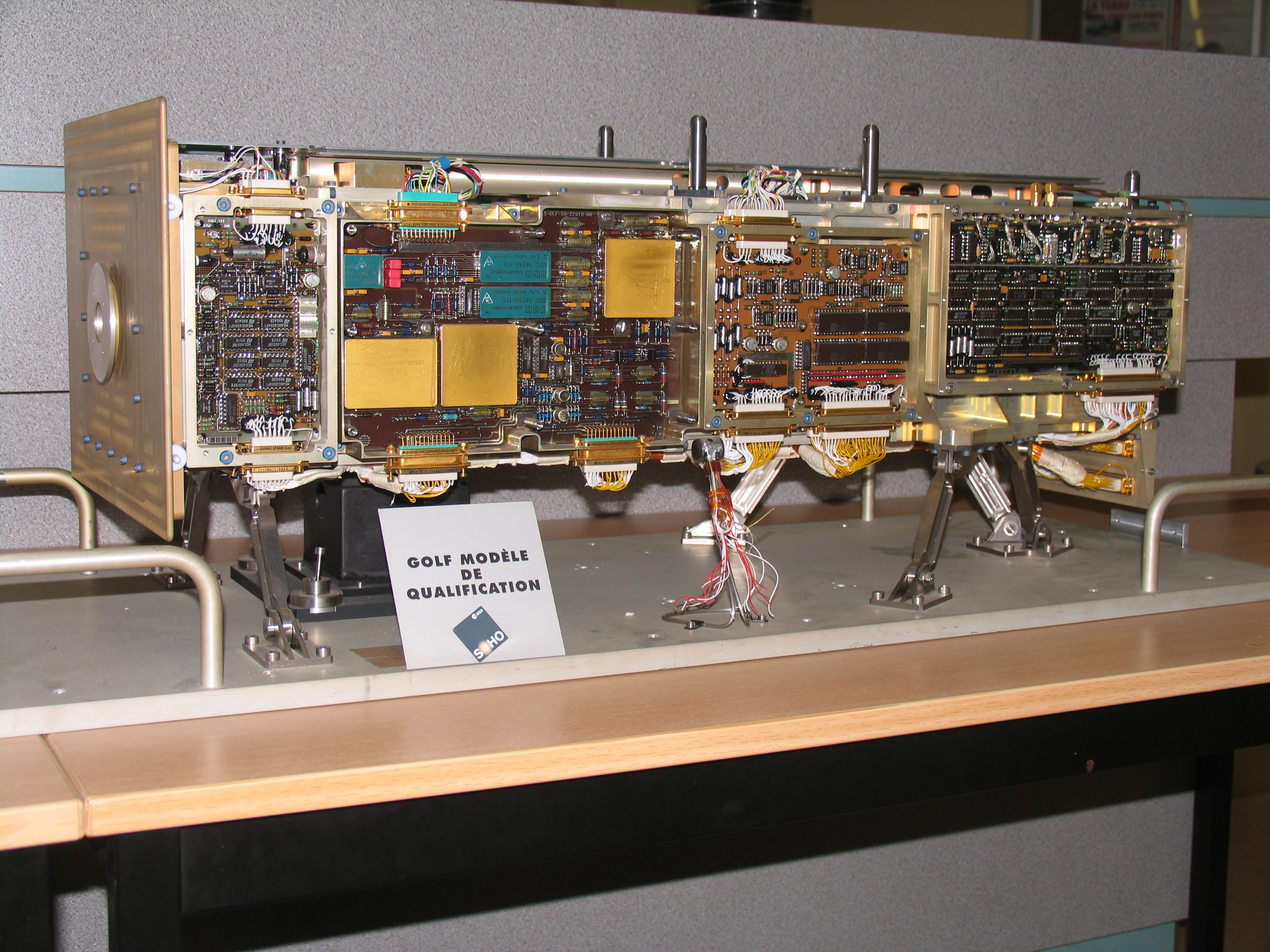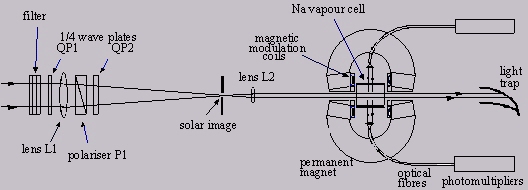Global Oscillations at Low Frequencies - Instrument
A complete description of the GOLF instrument was published by Solar Physics, vol. 162, p. 61-99, 1995.

The instrument configuration is shown schematically in the Figure. Light from the sun passes through a filter which isolates a 17 Å band centred on the Na D lines. It is then brought to a focus by the lens L1. Lens L2 serves to produce a near parallel beam to traverse the vapour cell, while at the same time imaging the entrance pupil of the system at the centre of the cell. This optical arrangement serves to minimise the influence of transverse variations in instrument sensitivity, by minimising their correlation with points on the solar image. After traversing the cell, the beam is effectively absorbed in a light trap. Light scattered from the vapour in the cell at 90 degrees is collected by two photomultiplier tubes in a symmetrically opposed configuration, operating in photon counting mode. The cell is placed between the poles of a permanent magnet, giving a 5000 gauss longitudinal magnetic field through the sodium vapour. An additional longitudinal field of ± 100 gauss is applied by means of the small coils, which can be seen in the Figure.

The incident light is circularly polarised by a combination of the linear polariser P1 and the quarter-wave plate QP2. A change of relative orientation of P1 and QP2 by 90 degrees results in a change in the sense of the circularly polarised light transmitted. This change provides the measurement of the intensity ratio in the above equation, which is the direct indicator of the solar velocity vector.
The addition of the second quarter-wave plate QP1 facilitates the measurement of the longitudinal component of the average solar magnetic field. Switching the relative orientation of QP1 and P1 by 90 degrees yields an intensity ratio which is sensitive to the intrinsic circular polarisation of the solar sodium lines, which in turn is determined by the average solar magnetic field.
Sodium cell performances
In a first paper (Boumier and Damé 1993), we describe the main characteristics of a radiative transfer model of the resonance cell. We report the most important results concerning the performance of the cell and its dependance on temperature. In another paper (Boumier et al 1994), we detail laboratory tests to determine the performances of the cell built for the experiment. The results are in good agreement with numerical simulations of the resonance processes, and as a final result, we could conclude that the level of performances required for the flight instrument will be obtained.
Industry, both large and small, have made many important contributions to GOLF. Particular innovative developments are due to ATERMES for microwiring, BERTIN and Co. for technical developments for cell supports, CASA for mechanisms and associated electronics, CRISA for the power supply units, FICHOU for the cell construction, PHILIPS Eindhoven for the Gehleniet glass and laser welding, SOUDUPIN for the magnetic shielding, SOVIS for the fibre optics, STIGMA Optique for the cell optics, TMM for the magnet development and ZODIAC International for the multi-layer insulation of the sensor unit.